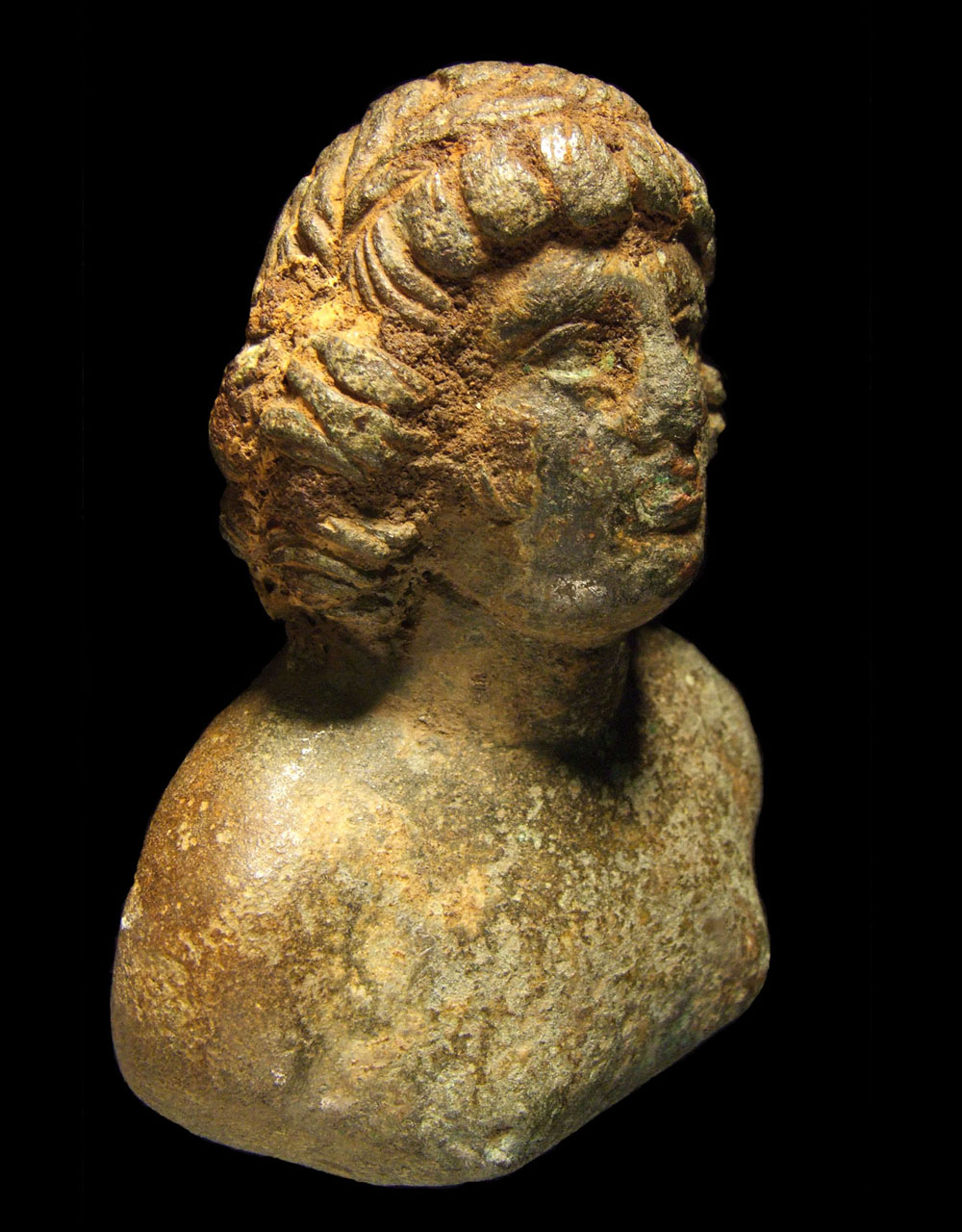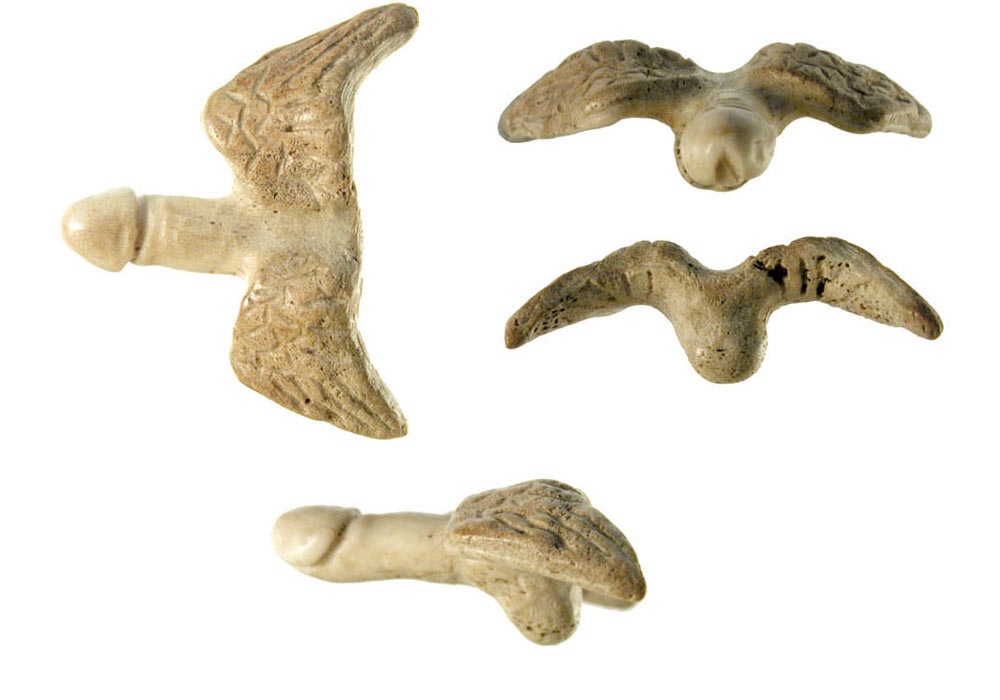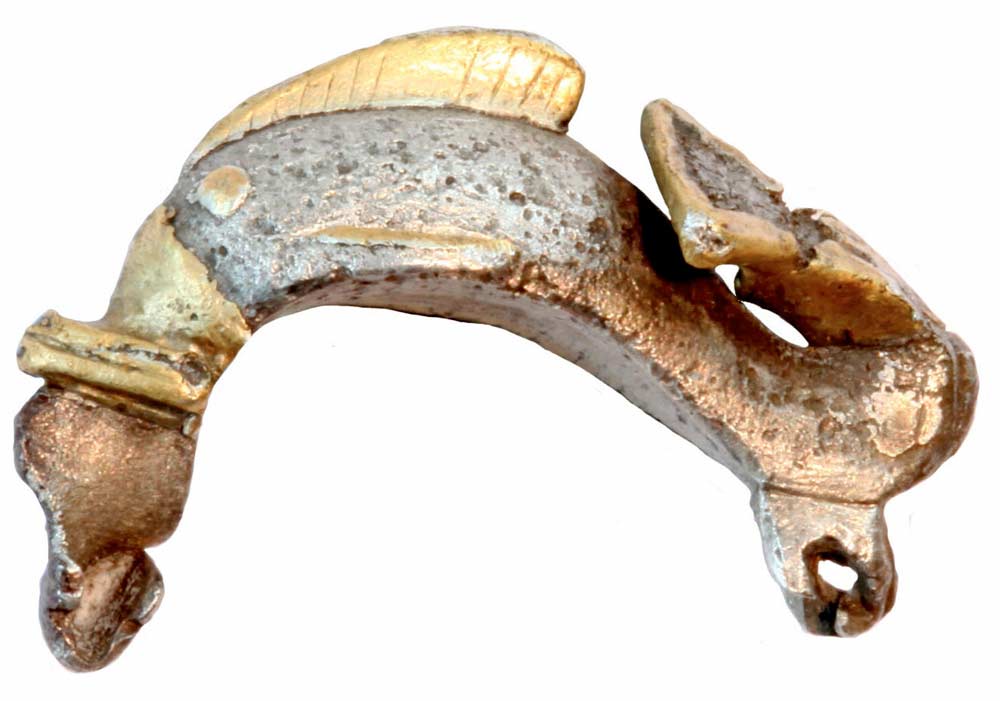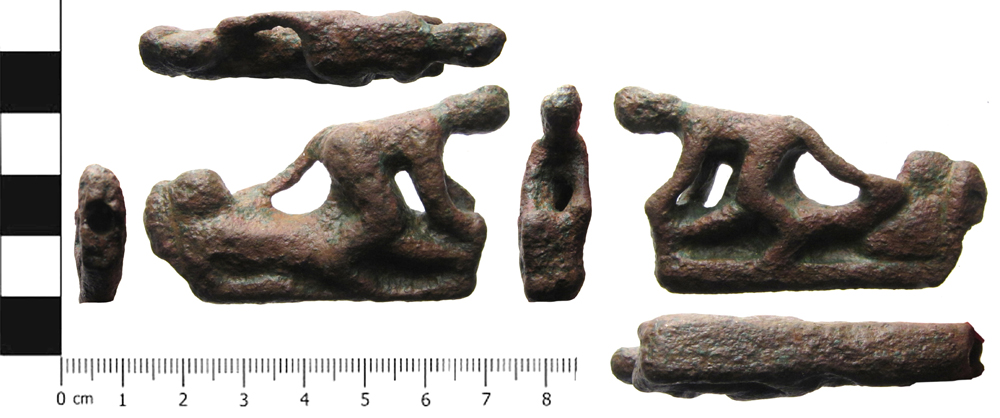Penis-Shaped Bone & Lover's Bust Among Trove of Roman Art

Amateurs using metal detectors have discovered a trove of Roman artifacts, including a bust possibly depicting a male lover of a Roman emperor, a silver and gold brooch of a leaping dolphin and a penis-shaped animal bone.
The wide array of art, found across Britain, dates back about 1,600 to 2,000 years, when the Romans ruled the island.
This art is among almost 25,000 Roman artifacts (the bulk of them coins) reported in England and Wales in 2011. They were documented as part of the Portable Antiquities Scheme (PAS) and published recently in the journal Britannia.
In the journal article, Sally Worrell, a prehistoric and Roman finds adviser with PAS, and John Pearce, a lecturer in archaeology at King's College London, analyze a small selection of the Roman artifacts. [See Photos of the Roman Artifacts]

In England and Wales, amateurs are allowed to use metal detectors to uncover artifacts and, depending on the nature of their finds, potentially own them. The practice is controversial, with professional archaeologists concerned about the disturbance of potential sites and the loss of provenance information. PAS, a government-backed program, records the findings in an online public database. Some information, such as the precise details of find spots, is restricted to protect potential archaeological sites.
The leaping dolphin
The silver, gold-gilded dolphin brooch is one of the most unusual examples. Found in Essex County, northeast of London, Worrell told LiveScience in an interview that it is a rare piece. "Something that sort of depicts a three-dimensional dolphin is a bit rare, should we say," she said. "I certainly had a look at all the publications from this country and I couldn't really find another one like it."
Sign up for the Live Science daily newsletter now
Get the world’s most fascinating discoveries delivered straight to your inbox.
Worrell believes the artifact was likely created on the European mainland and brought to Britain in Roman times. "We can't say if it was worn by a man or woman, it could have been either, but I think it was a special sort of brooch."

Worrell and her colleagues also describe a finger-ring that British Museum analysis determined was 90- to 93-percent gold. Coincidentally, it was found in Nottinghamshire, the legendary stomping grounds of Robin Hood (he lived long after Roman times).
Incised with decorations, it has a "tiny oval gem" at its center and is so small it was likely worn by a child or woman, Worrell said. It may have been given as a betrothal ring. "It's a very small but very attractive piece," she said. "It might have been a symbol of high status if you like."
How a rich, ancient find like this ended up buried in Nottinghamshire is a mystery. It could simply have been lost. Or, Worrell said, "They might have deposited an object like that as a gift to the gods. We just don't know."
Dazzling & alluring
Another new artifact, this one from Northumberland, highlights the colorful enamel work that was carried out on the island around 1,800 years ago. In it, detailed rosettes are shown amid shrinking circles drawn in blue, white and red. It would have decorated the harness of a Roman rider's horse. "It's very pretty and it would have looked quite dazzling," Worrell said.
Even more alluring, arguably, was a copper alloy bust that depicts a bare-chested young man that could be Antinous, the male lover of Emperor Hadrian.
The hollow bust, found near Market Rasen in Lincolnshire, appears to be a furniture fitting, perhaps part of a furniture chest. Researchers can't be certain that this is Hadrian's lover but its hairstyle closely matches other statues known of him.
Hadrian ruled between A.D. 117 and 138 and focused on consolidating the Roman Empire. He authorized construction of a system of fortifications in Britain known as Hadrian's Wall. Homosexuality was not viewed negatively in ancient Rome and the emperor's affair with Antinous, a Greek man, was not unusual. [In Photos: Gladiators of the Roman Empire]
"[T]o ordinary Romans it mattered little, for in the beginning, at least, Hadrian's predilections seemed nothing special," writes British Museum curator Thorsten Opper in his book "Hadrian: Empire and Conflict" (Cambridge University Press, 2008).
However, when Antinous died in Egypt in A.D. 130, while Hadrian was touring the province, the emperor took it very hard. He ordered the deification of his dead lover, and the Antinous cult spread throughout the empire with statues of him being erected and a city, in Egypt, being named after him.
John Pearce told LiveScience that, if the newly found bust is Antinous, it would be only the third example known from Britain. "If it is Antinous, it's quite interesting because it's one of the few pieces of evidence that we have for the cult of Antinous extending beyond the Mediterranean."
Erotic discoveries
A few artifacts show the erotic side of Roman art. The most explicit object is a copper alloy knife handle found in North Yorkshire and showing a man and woman having sex.

"The man lies on a couch and is straddled by a woman who faces his feet, which she holds, while the man's left hand rests on her left buttock," write Worrell and Pearce in the journal article.
"It's not uncommon to find sexually explicit iconography in the Roman household complex generally," Pearce said in the interview, noting that Pompeii, a city in Italy buried in a volcanic eruption, has explicit murals.
"One theory is that those scenes that show sexual activity have an apotropaic power, because they make you laugh so that wards off the evil eye," he said. A knife with a handle like this could be carried around, protecting the user. "It's a kind of insurance policy."
Another risqué item is a penis carved out of animal bone with two wings on it, a common motif in Roman times, Pearce noted.
Yet another item is a hollow pendent in the shape of a penis, this one made out of gold. The use of the precious metal to make a penis is "probably telling you mostly about the status of the person who commissioned it," Pearce said.
Follow LiveScience on Twitter @livescience. We're also on Facebook & Google+.

Owen Jarus is a regular contributor to Live Science who writes about archaeology and humans' past. He has also written for The Independent (UK), The Canadian Press (CP) and The Associated Press (AP), among others. Owen has a bachelor of arts degree from the University of Toronto and a journalism degree from Ryerson University.









